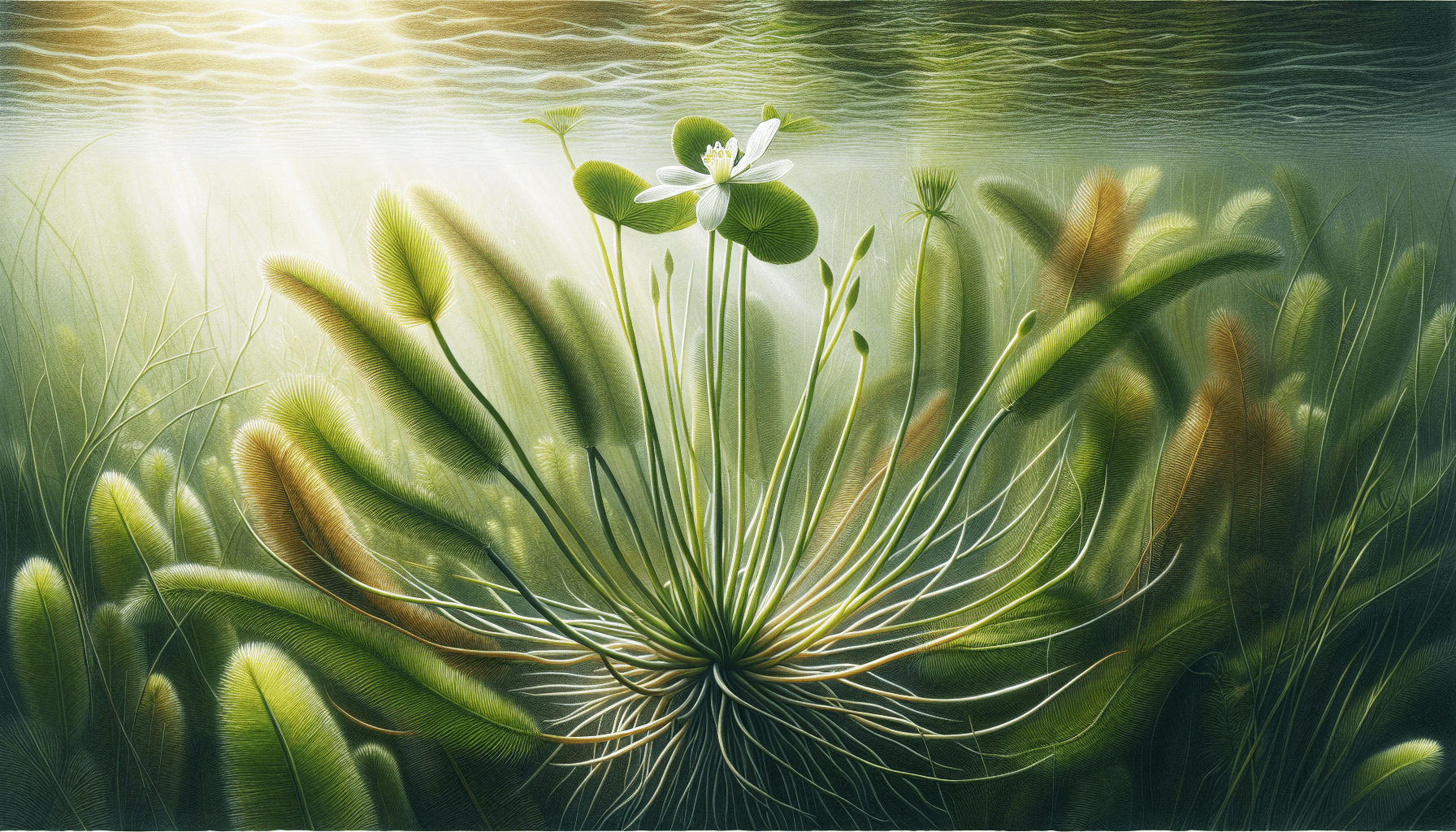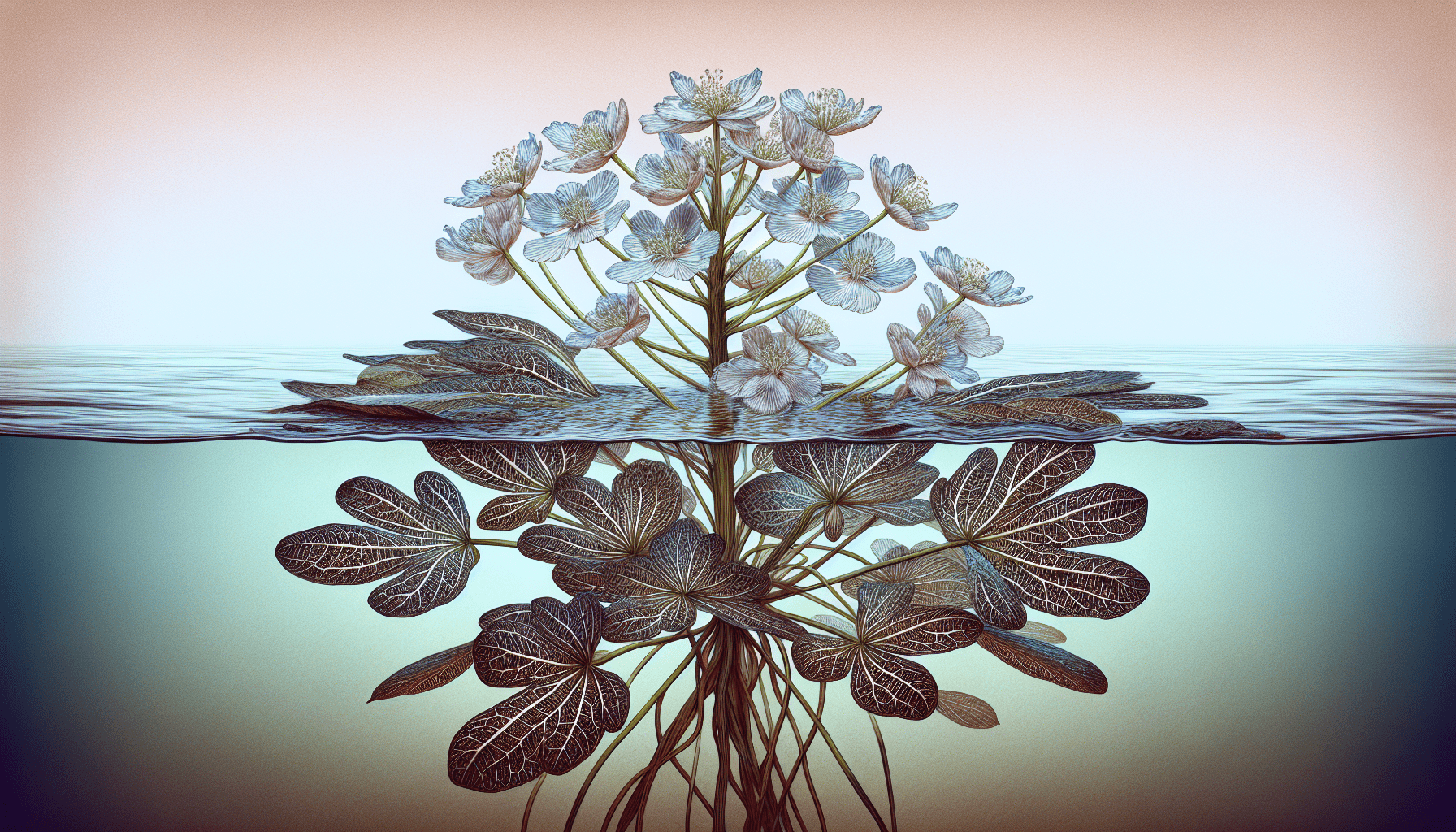In this scholarly exploration, your understanding of aquatic ecosystem dynamics will be broadened by focusing on a very specific, yet influential player – Potamogeton Maackianus. Often overlooked, this aquatic weed plays pivotal roles in underwater environment balance and health. You will traverse through its taxonomy, geographical distribution, ecological significance, and impacts on human activities. This article will not merely answer the question “What is the aquatic weed Potamogeton Maackianus?” but will enlighten you to its vital importance and the necessity for preserving such plant life amidst growing environmental concerns.

Scientific Classification of Potamogeton Maackianus
Potamogeton maackianus, known as Maack’s pondweed, is a species of aquatic plant that holds a taxonomical rank in the plant kingdom. It is classified under the kingdom Plantae, signifying multicellular, photosynthetic, and stationary organisms possessing cell walls made from cellulose. Moving down the classification scale, it falls under the phylum Tracheophyta, a division that includes vascular plants capable of internal fluid transport.
Considering the lower ranks, Potamogeton maackianus comes under the class Magnoliopsida, also referred to as the Dicotyledons, denoting species with an embryonic shoot comprising two seed leaves. Following the hierarchical order, this species is categorized under the order Alismatales that embraces mostly aquatic and semi-aquatic plants. The next hierarchical level is the family, and Potamogeton maackianus belongs to the Potamogetonaceae. Roots hint towards the nature of this family, which confines to pondweed species.
The genus classification of this plant is Potamogeton, accommodating a broad array of aquatic plants known commonly as pondweeds. Finally comes the species, which is defined as maackianus, honoring Richard Maack, a 19th-century Siberian explorer.
Brief Discussion on the Genus Potamogeton
The genus Potamogeton comprises a diverse group of aquatic plants, typically found in fresh water bodies worldwide. They are commonly referred to as pondweeds, due to their prevalence in ponds and other slow-moving water bodies. Interestingly, the name “Potamogeton” is derived from two ancient Greek words; “potamos” meaning river and “geiton” meaning neighbor – an apt description of these water-loving plants.
Physical Description of Potamogeton Maackianus
The Potamogeton maackianus is a perennial aquatic plant that stands out with its unique morphology. Height adjustments can be observed based on the water level, with specimens typically appearing above the water surface.
Description of Leaves
Presiding at the end of long and thin stalks, the leaves of Potamogeton maackianus are striking, both submerged and floating. Its submerged leaves are elongated, transparent, and display a definitive mid-vein, while its floating leaves are more opaque, green, and have a rounded oval shape. The distinctive characteristics of its leaves add an ornamental value distinct from other species within the same genus.
Description of the Stalk
The stalk of Potamogeton maackianus is thin and translucent, exhibiting a tubular structure. Filled with air spaces, it allows the plant to float on the water surface, which is essential for photosynthesis and sexual reproduction.
Description of Flowers & Seeds
The flowers of Potamogeton maackianus appear colored white, grouped in spiked clusters at the edge of extended stalks. The seeds or fruits are small, round, and olive-green in color. A single flower can produce several seeds, thus ensuring effective propagation.
Description of Roots & Rhizomes
The roots of Potamogeton maackianus are fibrous, serving as the anchors that hold the plant in place. Further, the plants also exhibit rhizomes, which are essentially horizontal underground stems. These help in asexual reproduction, allowing the plant to colonize an extensive area.
Habitat & Distribution of Potamogeton Maackianus
Potamogeton maackianus is a transcontinental species with an extensive habitat scope. Its preferred growing environments are diverse, ranging from natural water bodies to artificial water channel systems.
Preferred Water Conditions
Potamogeton maackianus tends to grow optimally in fresh to brackish waters with low to moderate nutrient levels. It can exist in either standing or slow-moving waters with silty to sandy bottoms, making for an ecologically adaptable species.
Geographical Locations where Potamogeton Maackianus is commonly found
This plant is widely distributed across east Asia, spanning Japan, Korea, and China. Its presence has also been reported in parts of North America, namely the northeastern United States and southeastern Canada.

Life Cycle of Potamogeton Maackianus
The life cycle of Potamogeton maackianus follows a perennial pattern. It is capable of living for more than two years, going through multiple growth phases within a single annual cycle.
Stages of Growth
Potamogeton maackianus uses both sexual and asexual modes of reproduction for growth. A single plant begins its life cycle as a seed, reaching maturity in about 2 to 4 weeks. Over the course of the growing season, it may undergo multiple cycles of flowering and seed production.
Time of Flowering and Seed Formation
The flowering and seed formation of Potamogeton maackianus usually take place from late spring to late summer. After a flowering event, seeds mature over several weeks before they are released into the surrounding environment.
Reproductive Mechanisms of Potamogeton Maackianus
To maintain survival and spread, Potamogeton maackianus utilizes both sexual and asexual modes of propagation.
Sexual Reproduction
In sexual reproduction, flowers are produced on emergent parts of the plant. Pollination is generally facilitated by wind or water, leading to the development of seeds. These seeds then germinate to produce new plants. Despite sexual reproduction playing a major role in species diversity, it is less prominent in terms of population maintenance and spread.
Asexual Reproduction
Asexual reproduction represents the dominant means of propagation in this species. This is mainly accomplished by the development of adventitious buds on the rhizomes and fragmentation of stems and rhizomes. Fragments containing one or more nodes can develop into new plants. This strategy allows Potamogeton maackianus to colonize surrounding areas swiftly.
Role of Potamogeton Maackianus in the Ecosystem
Potamogeton maackianus plays a crucial role in supporting and maintaining healthy aquatic environments.
As Habitat for Aquatic Life
Its dense growth offers shelter and breeding grounds for a range of aquatic organisms. It serves as an essential habitat and food source for several fish species, water birds, and invertebrates. It also provides an important nursery for juvenile fishes, supporting the overall aquatic biodiversity.
Impact on Water Quality
Potamogeton maackianus can influence the water quality of its environment. By absorbing nutrients and contaminants from the water, this plant species can help reduce eutrophication and improve water clarity, which benefits other aquatic organisms.
Threat from the Invasive Potamogeton Maackianus
Despite its ecological benefits, Potamogeton maackianus can become problematic, especially in regions where it is not native and there are few natural controls.
Effects on Native Flora
When introduced into new environments, Potamogeton maackianus can establish rapidly and outcompete native plant species. Its dense mats can block sunlight penetration and reduce oxygen levels in the water, dealing a great blow to other aquatic flora.
Effects on Aquatic Ecosystems
Change in plant communities can have a ripple effect on the associated fauna. Altered habitats may be less suitable for certain species, resulting in changes in ecosystem structure and function. Excessive growth of Potamogeton maackianus can also interfere with recreational water use, including boating and fishing.
Control and Management of Potamogeton Maackianus
Controlling the growth of Potamogeton maackianus is vital to maintaining the balance of ecosystems where it becomes invasive.
Physical Control Methods
Physical control methods include hand-pulling, cutting, or grooming the weed. While these methods can offer immediate relief, they are labor-intensive and usually unsuitable for large infestations.
Chemical Control Methods
Chemical control involving the use of aquatic herbicides can be more effective for larger infestations. However, this must be done cautiously, as improper application can have serious impacts on non-target species and overall water quality.
Biological Control Methods
Biological control can be efficient and sustainable, employing organisms, such as insects and fish, that naturally feed on Potamogeton maackianus. Nonetheless, this method requires careful selection and monitoring to prevent the new introductions from becoming a problem themselves.
Uses of Potamogeton Maackianus
Beyond being mere aquatic inhabitants, Potamogeton maackianus plays significant roles culturally and medicinally.
In Traditional Medicine
In traditional medicine, particularly in parts of east Asia, Potamogeton maackianus has been used to treat various ailments. The plant’s roots have been reportedly used in the treatment of fevers, while the entire plant was used to treat stomatitis.
In Aquascaping and Aquariums
Due to its aesthetics and oxygenating qualities, Potamogeton maackianus is suitable for use in aquascaping and aquariums. Its dense growth can provide excellent habitat for various fish and invertebrates within the confined space of an aquarium.
Research and Studies on Potamogeton Maackianus
Advances in our understanding of Potamogeton maackianus are primarily propelled by research and studies conducted on this species.
Current Status of Research on Potamogeton Maackianus
Although there is sizable scientific literature on Potamogeton maackianus, much of its biology and ecology is yet to be comprehensively understood. Current research efforts are focusing on documenting its invasiveness, exploring its potential uses, and developing effective control methods.
Major Discoveries or Studies on Potamogeton Maackianus
Some important discoveries have underlined its ecological role, invasive potential, and various control strategies. Certain studies have focused on understanding its growth patterns and adaptation mechanisms, which are crucial to designing effective management programs. Simultaneously, other research initiatives are exploring its use in traditional medicine and its potential for phytoremediation schemes.
In conclusion, Potamogeton maackianus, while being an elegant addition to an aquatic ecosystem, can potentially turn invasive, leading to disruptions in the ecosystem balance. Hence, management measures should be combined with further research to ensure the sustainable coexistence of this species with others in shared habitats.